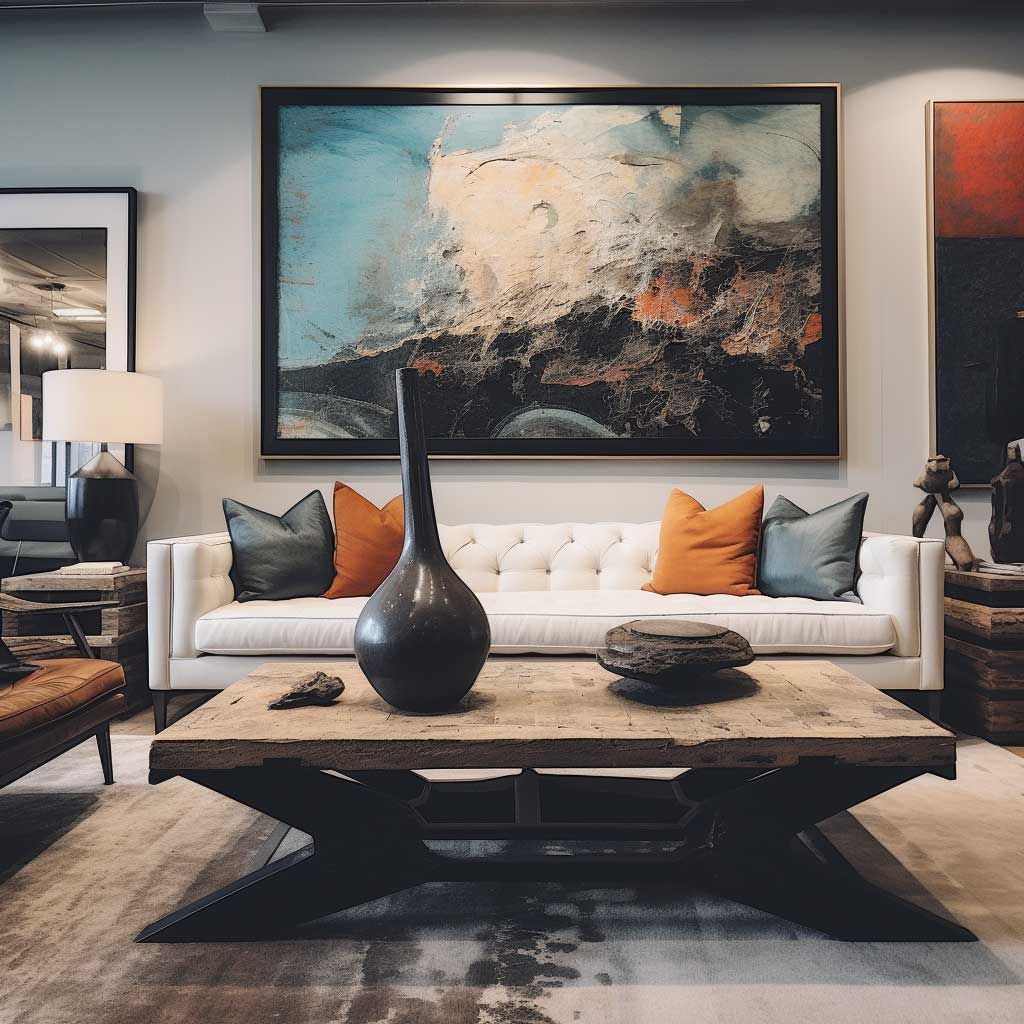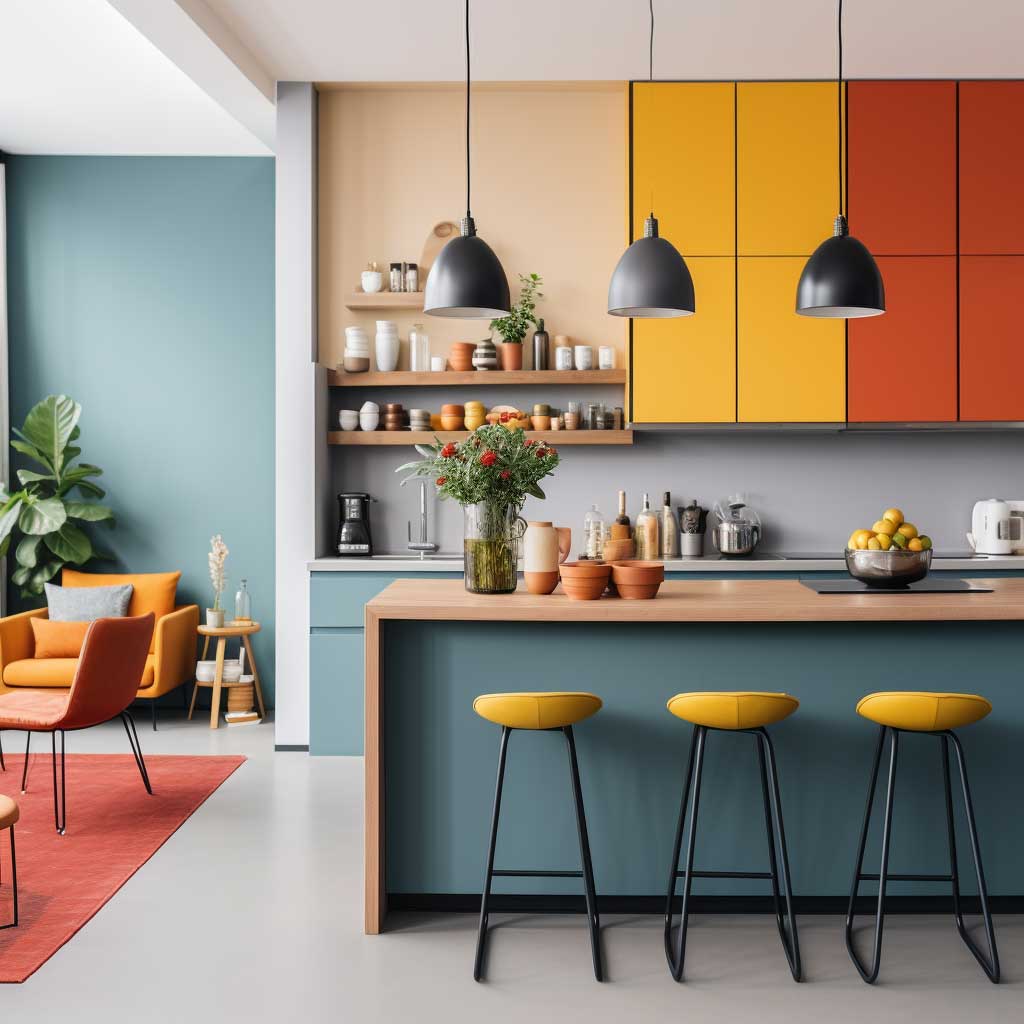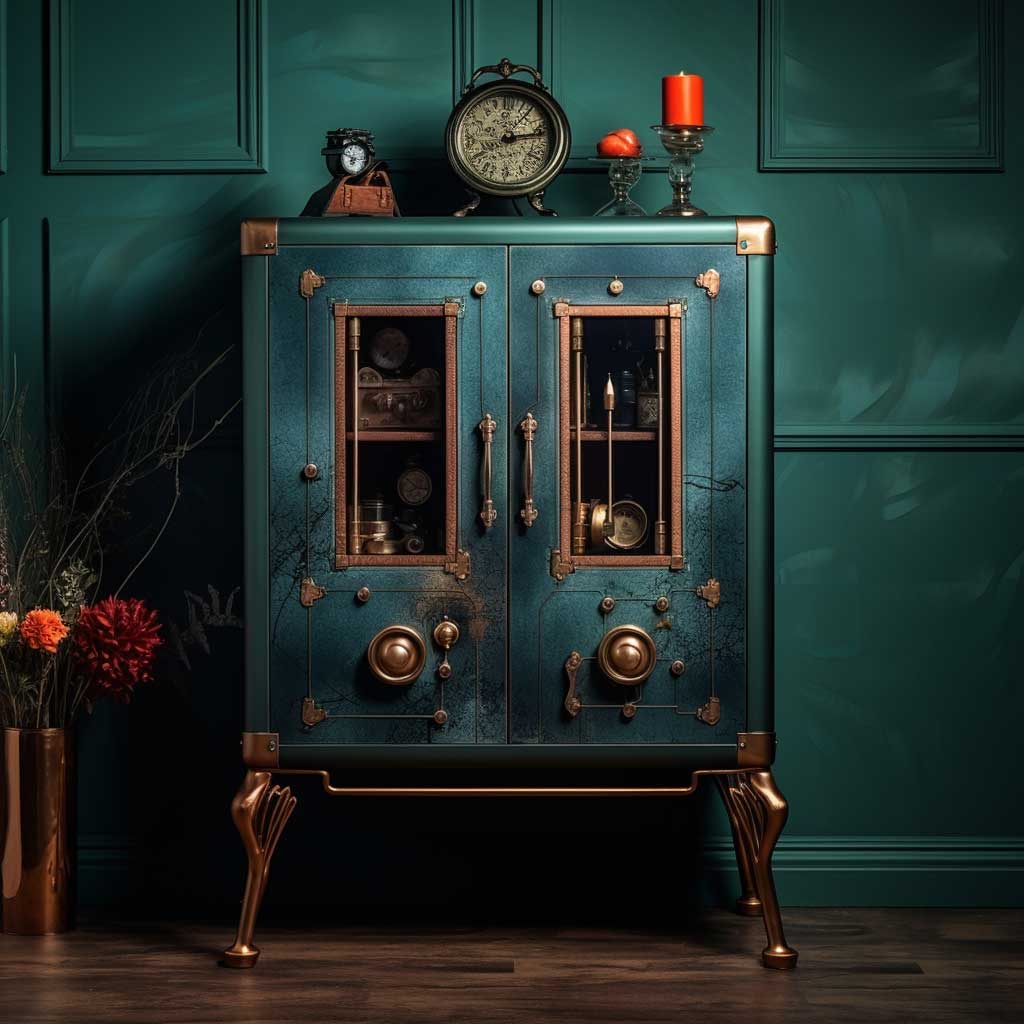Living in a tiny home doesn’t mean compromising on style or comfort. With the right design strategies, even the smallest living rooms can feel spacious and welcoming. This guide explores four innovative small space living room ideas that transform tiny areas into functional, stylish spaces. Embracing minimalism, clever storage solutions, multi-functional furniture, and the right color palette can make a significant difference in how your living room feels and functions. Whether you’re a tiny home dweller or looking to maximize a compact apartment living room, these ideas will inspire you to make the most of your small space.
Maximized Minimalism in Small Living Rooms


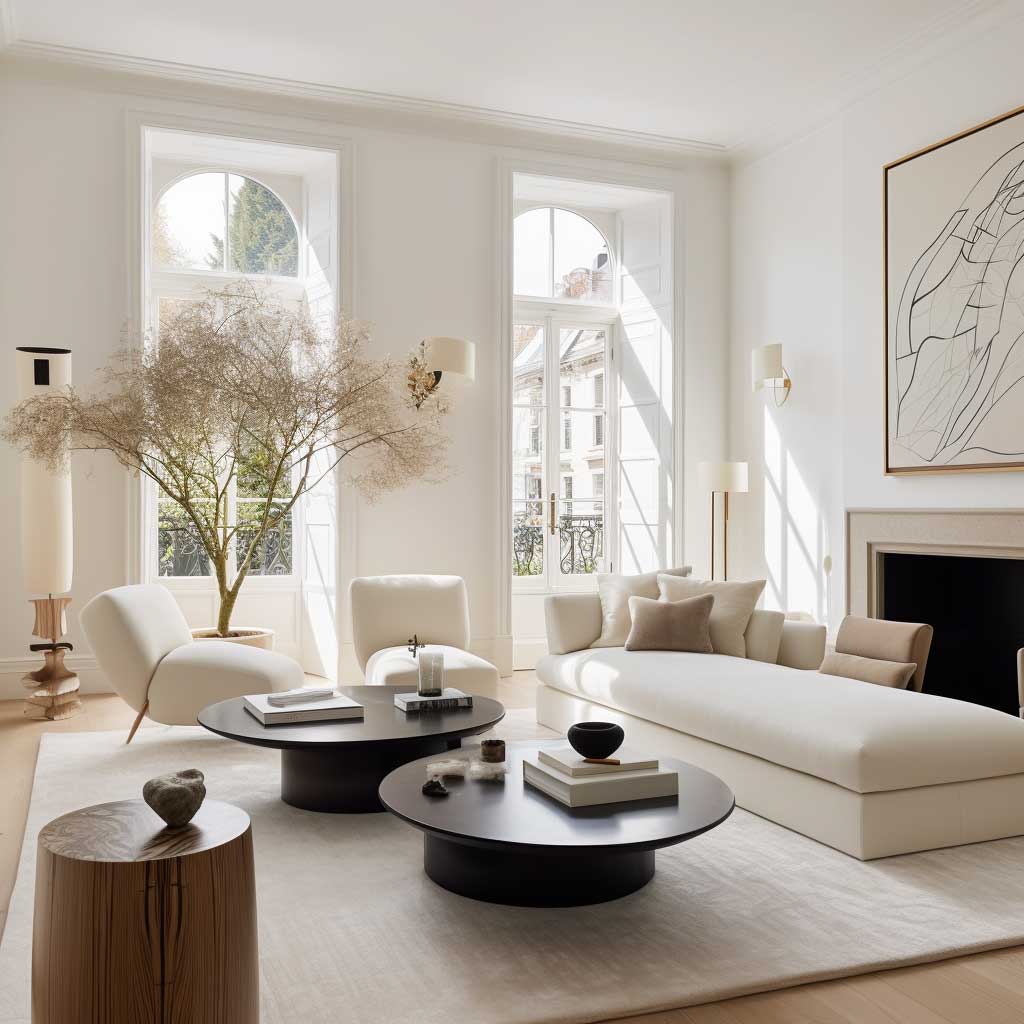
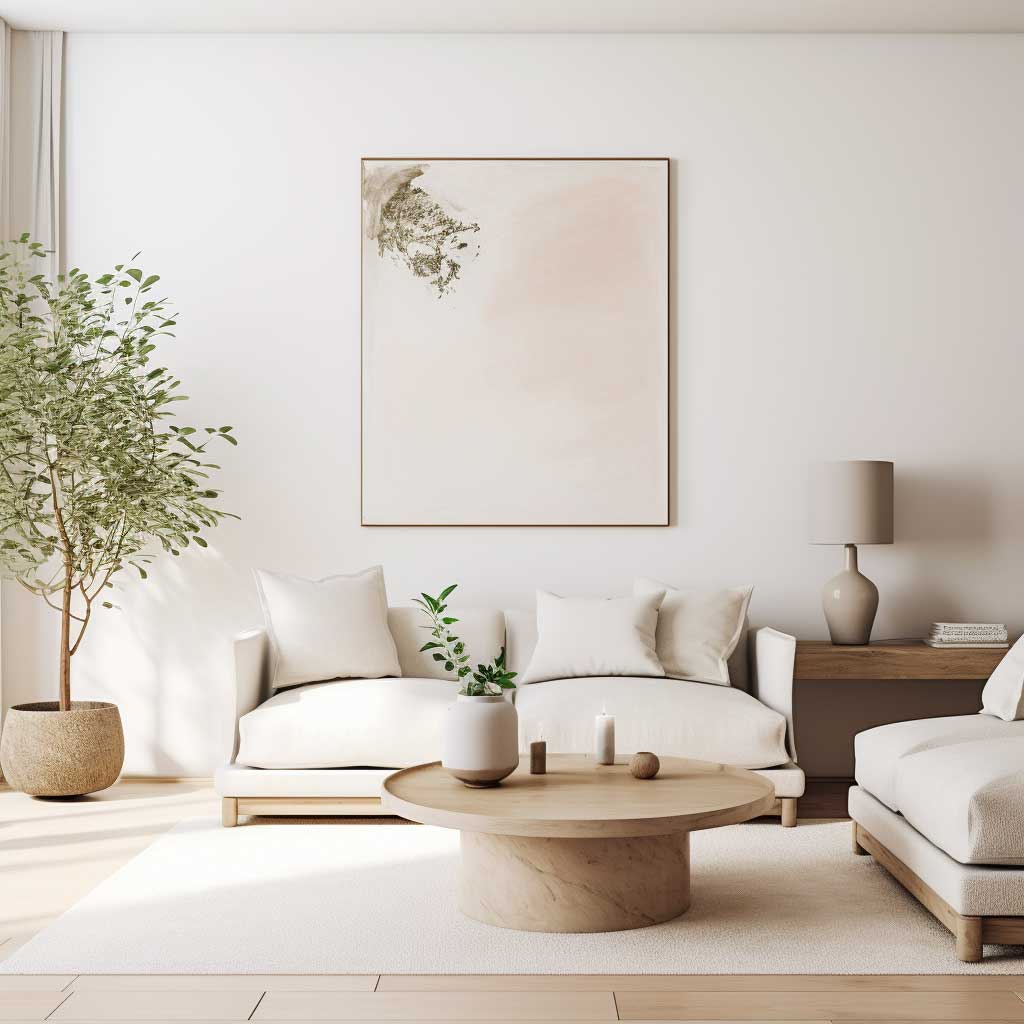
In the realm of interior design, the challenge of styling a small living room is often met with a unique solution: maximized minimalism. This approach is not just a trend; it’s a practical response to the growing need for making the most out of limited living spaces. Small space living room ideas often revolve around the concept of minimalism, a design philosophy that emphasizes simplicity, functionality, and clarity. In tiny homes or compact apartments, where every inch counts, minimalism becomes not just an aesthetic choice but a necessity for comfortable living.
Minimalism in interior design is characterized by clean lines, uncluttered spaces, and a monochromatic color palette. It’s about stripping down to the essentials and finding beauty in simplicity. This design philosophy has its roots in the Japanese concept of ‘Ma’, which translates to ‘space’ or ‘gap’. It’s the idea of valuing the empty space as much as the space occupied by objects. In small living rooms, this principle is particularly relevant. By reducing clutter and focusing on what is essential, minimalism allows the room to breathe, creating an illusion of more space.
To achieve maximized minimalism in a small living room, start with the color scheme. Light, neutral colors like whites, beiges, and light grays can make the room appear larger and brighter. When it comes to furniture, choose pieces that are both functional and stylish. Opt for a sofa with clean lines, a simple coffee table, and perhaps a sleek, modern chair. The key is to avoid overcrowding the room with too much furniture or decor.
Storage is another critical aspect of maximized minimalism. In a small living room, every item should have a place, and every piece of furniture should serve a purpose. Consider using multi-functional furniture, like a storage ottoman or a sofa bed, to maximize space. Built-in shelves or floating shelves can also provide storage without taking up floor space.
The benefits of a minimalist living room go beyond aesthetics. There’s a psychological aspect to it as well. A clutter-free space can lead to a clutter-free mind, reducing stress and promoting a sense of tranquility. In a world where we are constantly bombarded with stimuli, a minimalist living room can be a haven of peace and calm.
Minimalism is also environmentally friendly. By choosing fewer but higher-quality items, you reduce waste and contribute to a more sustainable lifestyle. This approach encourages mindful consumption, where each item in your living room is chosen with care and purpose.
Maximized minimalism in small living rooms is more than just a design trend; it’s a practical solution to the challenges of limited space. By embracing the principles of minimalism, you can create a living room that is not only stylish and modern but also functional and spacious. In the end, minimalism teaches us that sometimes, less really is more, especially when it comes to making the most of small living spaces.
Hidden Storage Havens in Small Living Rooms




In the quest to optimize small living spaces, hidden storage solutions emerge as a game-changer. Small space living room ideas often hinge on the ability to cleverly conceal storage, maintaining style without sacrificing functionality. This approach is crucial in tiny homes or compact apartments, where every square inch is valuable. Hidden storage havens are not just about tucking away belongings; they represent a smart design strategy that marries aesthetics with practicality, ensuring that living rooms remain uncluttered and spacious.
The concept of hidden storage in small living rooms revolves around the ingenious integration of storage solutions into the existing design elements. This could mean furniture with built-in storage compartments, such as sofas with drawers, coffee tables with hidden shelves, or ottomans that double as storage boxes. The idea is to have storage that doesn’t look like storage. It’s about maintaining a sleek, uncluttered look while having ample space to store books, gadgets, blankets, and other living room essentials.
To create a hidden storage haven in a small living room, start by assessing your storage needs. Identify what needs to be stored and how often you need access to these items. Use furniture that doubles as storage, but ensure it complements the overall decor. For instance, a vintage trunk can serve as a coffee table while offering ample storage space. Wall-mounted units and floating shelves can also provide storage without taking up floor space.
Another aspect of hidden storage is the use of multi-functional furniture. A sofa bed with storage, a TV unit with concealed shelves, or a bookcase that doubles as a room divider are excellent examples. The key is to keep the storage discreet and integrated into the design.
Hidden storage solutions in small living rooms offer several benefits. Firstly, they help maintain a tidy and organized space. When everything has its place, it’s easier to keep the room clutter-free. Secondly, hidden storage allows for greater flexibility in design. You’re not limited by bulky storage units or shelves, giving you more freedom to style your living room.
Moreover, hidden storage solutions can be a cost-effective way to maximize space. Instead of investing in additional storage units, you can utilize existing furniture, saving both space and money. This approach also encourages a more minimalist lifestyle, as you become more selective about what you keep in your living room.
Hidden storage havens are essential for small space living room ideas, offering a smart way to keep living spaces organized and stylish. By incorporating hidden storage solutions, you can enjoy a living room that feels spacious, uncluttered, and perfectly tailored to your needs. In the world of small living room design, hidden storage is not just a feature; it’s a necessity for creating a functional, comfortable, and aesthetically pleasing space.
Convertible Comfort in Small Living Rooms

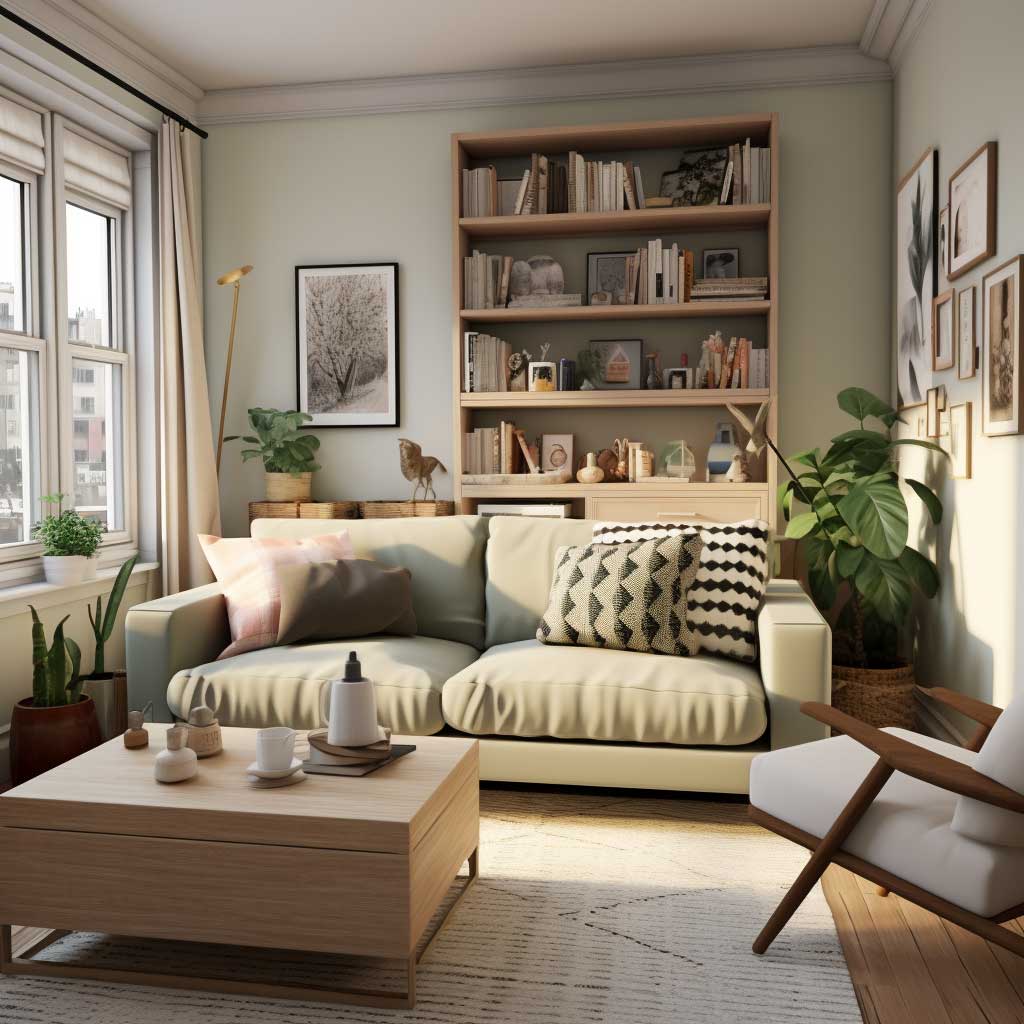


In the landscape of small space living room ideas, the concept of convertible comfort stands out as a beacon of innovation and practicality. For those residing in tiny homes or apartments, the living room often serves multiple purposes – a place to relax, entertain, work, and sometimes even sleep. The key to making such a multifunctional space work lies in convertible furniture – pieces that can adapt to various needs, providing comfort without compromising on style or space.
Convertible furniture has come a long way from the clunky sofa beds of the past. Today’s designs are sleek, stylish, and incredibly functional. The idea is simple yet ingenious – furniture that transforms to serve different purposes. A sofa that turns into a bed, a coffee table that adjusts in height to become a dining table, or a pouf that unfolds into a guest bed are all examples of how convertible furniture can optimize a small living space.
To incorporate convertible comfort into a small living room, start by identifying your space’s needs. Do you often have guests over and need an extra bed? Do you work from home and require a makeshift office? Once you understand your needs, look for furniture pieces that can serve multiple purposes.
When selecting convertible furniture, consider its ease of transformation and storage capabilities. A piece that is difficult to convert or takes up too much space when transformed defeats the purpose. The aesthetics are also important – the furniture should complement the overall style of your living room.
The primary benefit of convertible furniture in small living rooms is space optimization. By having furniture that serves multiple purposes, you reduce the need for additional pieces, freeing up valuable space. This is particularly beneficial in studio apartments or tiny homes where the living room may also function as a bedroom or home office.
Convertible furniture also offers flexibility. You can easily transform your living space to suit different occasions, whether it’s a casual movie night, a formal dinner, or accommodating overnight guests. This adaptability is a significant advantage in small living spaces.
Convertible comfort is a cornerstone of small space living room ideas, offering a blend of functionality, flexibility, and style. In the world of small living spaces, convertible furniture is not just a convenience; it’s a necessity for creating a dynamic, multi-functional, and comfortable living environment. By embracing convertible furniture, you can ensure that your small living room meets all your needs while remaining spacious and stylish.
Light and Bright: Enhancing Small Living Rooms




In the realm of small space living room ideas, the concept of creating a ‘Light and Bright’ environment is pivotal. For those living in compact apartments or tiny homes, the challenge often lies in making the living room feel open, airy, and inviting. This is where the strategic use of light and color comes into play. By harnessing the power of natural light, choosing the right color palette, and incorporating reflective surfaces, even the smallest living rooms can be transformed into luminous and spacious havens.
Natural light plays a crucial role in making a small living room feel larger and more welcoming. Maximizing natural light can be achieved through various means. Large windows should be left unobstructed, or dressed with sheer, light-permitting curtains. Mirrors strategically placed opposite windows can amplify the amount of light entering the room, further enhancing the sense of space.
The color palette of a living room significantly impacts how light or cramped it feels. Light, neutral colors like whites, creams, and pastels reflect more light than they absorb, making the room appear brighter and more spacious. Painting walls in light colors, choosing light-colored furniture, and using bright accents can all contribute to a ‘Light and Bright’ living room.
Reflective surfaces are a secret weapon in creating a light and airy living room. Items such as glass-top tables, metallic fixtures, and glossy finishes can help bounce light around the room, making it feel more open. Even small accents like decorative mirrors or metallic vases can make a significant difference.
In a ‘Light and Bright’ living room, furniture should complement the overall airy feel. Opt for pieces with a slim profile and open design. Avoid heavy, bulky furniture that can dominate the space. The layout is also crucial – arrange furniture to allow for easy movement and avoid blocking sources of natural light.
A ‘Light and Bright’ living room does more than just visually expand the space; it also has a positive psychological impact. Brighter spaces are often associated with happiness, energy, and productivity. They can uplift the mood and create a more pleasant living environment.
Creating a ‘Light and Bright’ living room is a key strategy in the world of small space living room ideas. It’s about more than just aesthetics; it’s about creating a space that feels open, peaceful, and welcoming. By focusing on natural light, color choices, and reflective surfaces, even the smallest living room can be transformed into a bright and spacious area, proving that with the right design choices, size does not limit style and comfort.
Embracing small space living room ideas is all about creativity and smart design. By choosing the right furniture, colors, and storage solutions, even the most compact living rooms can feel spacious and comfortable. These four ideas provide a starting point for transforming your tiny living space into an area that feels larger than its physical boundaries. Remember, the key is to balance functionality with aesthetics, ensuring that your living room is not only practical but also a reflection of your personal style.




